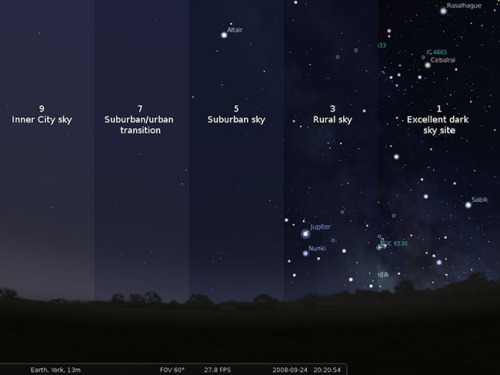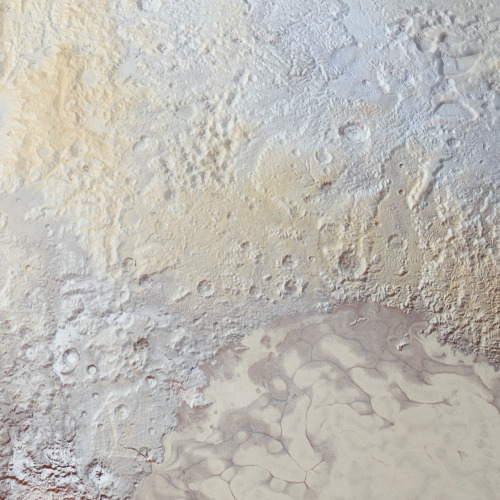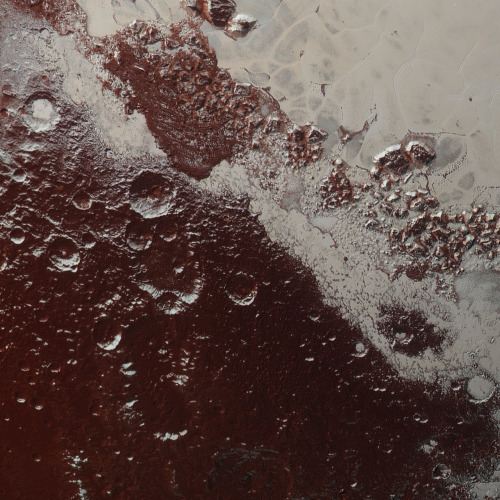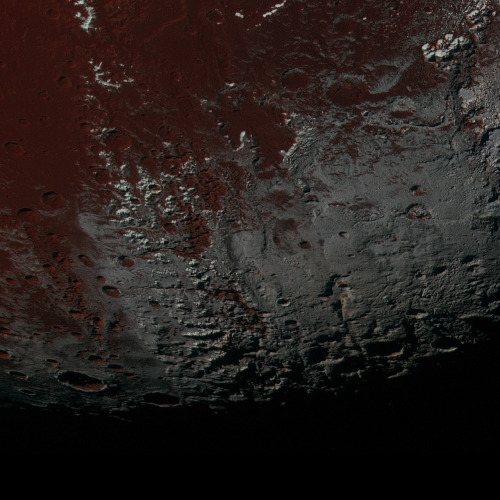Hahaha, Right After I Start Out A Podcast Talking About How We’ll Never Poke The Sun, It Turns Out
Hahaha, right after I start out a podcast talking about how we’ll never poke the Sun, it turns out we’re sending a probe to do just that!
Solar System: Things to Know This Week
Mark your calendars for summer 2018: That’s when we’re launching a spacecraft to touch the sun.
In honor of our first-ever mission to the heart of the solar system, this week we’re delving into the life and times of this powerful yellow dwarf star.

1. Meet Parker
Parker Solar Probe, our first mission to go to the sun, is named after Eugene Parker, an American astrophysicist who first theorized that the sun constantly sends out a flow of particles and energy called the solar wind. This historic mission will explore one of the last regions of the solar system to be visited by a spacecraft and help scientists unlock answers to questions they’ve been pondering for more than five decades.

2. Extra SPF, Please
Parker Solar Probe will swoop within 4 million miles of the sun’s surface, facing heat and radiation like no spacecraft before it. The mission will provide new data on solar activity to help us better understand our home star and its activity - information that can improve forecasts of major space-weather events that could impact life on Earth.

3. Majorly Massive
The sun is the center of our solar system and makes up 99.8 percent of the mass of the entire solar system. If the sun were as tall as a typical front door, Earth would be about the size of a nickel.
4. Different Spin
Since the sun is not a solid body, different parts of the sun rotate at different rates. At the equator, the sun spins once about every 25 days, but at its poles the sun rotates once on its axis every 36 Earth days.

5. Can’t Stand on It
The sun is a star and a star doesn’t have a solid surface. Rather, it’s a ball of ionized gas 92.1% hydrogen (H2) and 7.8% helium (He) held together by its own gravity.
6. Center of Attention
The sun isn’t a planet, so it doesn’t have any moons. But, the sun is orbited by eight planets, at least five dwarf planets, tens of thousands of asteroids, and hundreds of thousands to trillions of comets and icy bodies.

7. It’s Hot in There
And we mean really, really hot. The temperature at the sun’s core is about 27 million degrees Fahrenheit. However, its atmosphere, the corona, can reach temperatures of 3 million degrees. (That’s as if it got hotter the farther away you got from a fire, instead of cooler!) Parker Solar Probe will help scientists solve the mystery of why the corona’s temperature is so much higher than the surface.

8. Travel Conditions
The sun influences the entire solar system, so studying it helps us better understand the space weather that our astronauts and spacecraft travel through.
9. Life on the Sun?
Better to admire from afar. Thanks to its hot, energetic mix of gases and plasma, the sun can’t be home to living things. However, we can thank the sun for making life on Earth possible by providing the warmth and energy that supply Earth’s food chain.
10. Chance of a Lifetime
Last but not least, don’t forget that the first total solar eclipse to sweep across the U.S. from coast-to-coast since 1918 is happening on August 21, 2017. Our toolkit has you need to know to about it.
Want to learn more? Read our full list of the 10 things to know this week about the solar system HERE.
Make sure to follow us on Tumblr for your regular dose of space: http://nasa.tumblr.com
More Posts from Fillthevoid-with-space and Others

The Cassini probe took a picture of Saturn that includes Earth in it!
Cassini has actually taken a ton of cool photos of Saturn if you want to check those out in the wake of last week’s planets podcast.

sun depicted as a divinity petroglyph on the plateau Yagour (High Atlas mountains), Morocco.. 6000 to 8000 BC
What's Made in a Thunderstorm and Faster Than Lightning? Gamma Rays!
A flash of lightning. A roll of thunder. These are normal stormy sights and sounds. But sometimes, up above the clouds, stranger things happen. Our Fermi Gamma-ray Space Telescope has spotted bursts of gamma rays - some of the highest-energy forms of light in the universe - coming from thunderstorms. Gamma rays are usually found coming from objects with crazy extreme physics like neutron stars and black holes.
So why is Fermi seeing them come from thunderstorms?

Thunderstorms form when warm, damp air near the ground starts to rise and encounters colder air. As the warm air rises, moisture condenses into water droplets. The upward-moving water droplets bump into downward-moving ice crystals, stripping off electrons and creating a static charge in the cloud.

The top of the storm becomes positively charged, and the bottom becomes negatively charged, like two ends of a battery. Eventually the opposite charges build enough to overcome the insulating properties of the surrounding air - and zap! You get lightning.

Scientists suspect that lightning reconfigures the cloud’s electrical field. In some cases this allows electrons to rush toward the upper part of the storm at nearly the speed of light. That makes thunderstorms the most powerful natural particle accelerators on Earth!

When those electrons run into air molecules, they emit a terrestrial gamma-ray flash, which means that thunderstorms are creating some of the highest energy forms of light in the universe. But that’s not all - thunderstorms can also produce antimatter! Yep, you read that correctly! Sometimes, a gamma ray will run into an atom and produce an electron and a positron, which is an electron’s antimatter opposite!

The Fermi Gamma-ray Space Telescope can spot terrestrial gamma-ray flashes within 500 miles of the location directly below the spacecraft. It does this using an instrument called the Gamma-ray Burst Monitor which is primarily used to watch for spectacular flashes of gamma rays coming from the universe.

There are an estimated 1,800 thunderstorms occurring on Earth at any given moment. Over the 10 years that Fermi has been in space, it has spotted about 5,000 terrestrial gamma-ray flashes. But scientists estimate that there are 1,000 of these flashes every day - we’re just seeing the ones that are within 500 miles of Fermi’s regular orbits, which don’t cover the U.S. or Europe.
The map above shows all the flashes Fermi has seen since 2008. (Notice there’s a blob missing over the lower part of South America. That’s the South Atlantic Anomaly, a portion of the sky where radiation affects spacecraft and causes data glitches.)

Fermi has also spotted terrestrial gamma-ray flashes coming from individual tropical weather systems. The most productive system we’ve seen was Tropical Storm Julio in 2014, which later became a hurricane. It produced four flashes in just 100 minutes!

Learn more about what Fermi’s discovered about gamma rays over the last 10 years and how we’re celebrating its accomplishments.
Make sure to follow us on Tumblr for your regular dose of space: http://nasa.tumblr.com.

Galaxy NGC 7714 After Collision : Is this galaxy jumping through a giant ring of stars? Probably not. Although the precise dynamics behind the featured image is yet unclear, what is clear is that the pictured galaxy, NGC 7714, has been stretched and distorted by a recent collision with a neighboring galaxy. This smaller neighbor, NGC 7715, situated off to the left of the featured frame, is thought to have charged right through NGC 7714. Observations indicate that the golden ring pictured is composed of millions of older Sun-like stars that are likely co-moving with the interior bluer stars. In contrast, the bright center of NGC 7714 appears to be undergoing a burst of new star formation. NGC 7714 is located about 100 million light years away toward the constellation of the Fish . The interactions between these galaxies likely started about 150 million years ago and should continue for several hundred million years more, after which a single central galaxy may result. via NASA
js

I went stargazing in early August of this year (2019) and I want to suggest a few options that will hopefully make this sort of trip accessible to people who are curious about stargazing but haven’t tried it yet. I talk through the process of finding the right time and location, selecting campsites, preparing some tools to maintain your nightvision, and using an app to figure out stars and constellations more easily.
Below the cut are the transcript, sources, and music credits. Send me any topic suggestions via Tumblr message (you don’t need an account to do this, just submit as anonymous). You can also tweet at me on Twitter at @HDandtheVoid, or you can ask me to my face if you know me in real life. Subscribe on iTunes to get the new episodes of my semi-monthly podcast, and I’d love if you could rate and review it. Go ahead and tell friends if you think they’d like to hear it, too!
(The next episode is undecided, but I’m hoping to have it out for September.)
Transcript
Sources
Dark Site Finder
SkyView Lite
Intro Music: ‘Better Times Will Come’ by No Luck Club off their album Prosperity
Filler Music: me singing ‘House of Gold’ by Twenty-One Pilots off their album Vessel
me singing a parody of ‘Mexican Wine’ by Fountains of Wayne off their album Welcome Interstate Managers
Outro Music: ‘Fields of Russia’ by Mutefish off their album On Draught

People think they know darkness, and that they experience darkness everyday, but they don’t, really.
Across the United States, natural darkness is an endangered resource. East of the Mississippi, it is already extinct; even in the West, night sky connoisseurs admit that it’s quicker to find true darkness by flying to Alice Springs, Australia, than traveling to anywhere in the lower forty-eight.
Ever since the nation’s first electric streetlight made its debut in Cleveland, on April 29, 1879, the American night has become steadily brighter. In his new book, The End of Night: Searching for Natural Darkness in an Age of Artificial Light, Paul Bogard aims to draw attention to the naturally dark night as a landscape in its own right — a separate, incredibly valuable environmental condition that we overlook and destroy at our own peril.
Read More.
-
 cheeseforsalvation reblogged this · 4 years ago
cheeseforsalvation reblogged this · 4 years ago -
 revelationaryheroics liked this · 4 years ago
revelationaryheroics liked this · 4 years ago -
 rkfkrkfkfh liked this · 5 years ago
rkfkrkfkfh liked this · 5 years ago -
 lonestarfangirl2014 liked this · 6 years ago
lonestarfangirl2014 liked this · 6 years ago -
 theonewiththe-whales liked this · 6 years ago
theonewiththe-whales liked this · 6 years ago -
 solar-butch reblogged this · 6 years ago
solar-butch reblogged this · 6 years ago -
 washingmachineonfir liked this · 6 years ago
washingmachineonfir liked this · 6 years ago -
 thatkiddcharles liked this · 6 years ago
thatkiddcharles liked this · 6 years ago -
 pepdart liked this · 7 years ago
pepdart liked this · 7 years ago -
 phyar liked this · 7 years ago
phyar liked this · 7 years ago -
 90sfilmbuff liked this · 7 years ago
90sfilmbuff liked this · 7 years ago -
 dreamyangtianqi liked this · 7 years ago
dreamyangtianqi liked this · 7 years ago -
 jamesjunghanns liked this · 7 years ago
jamesjunghanns liked this · 7 years ago -
 metaphysikal reblogged this · 7 years ago
metaphysikal reblogged this · 7 years ago -
 yourstrulysha liked this · 7 years ago
yourstrulysha liked this · 7 years ago -
 sabrinatristan reblogged this · 7 years ago
sabrinatristan reblogged this · 7 years ago -
 gglennw reblogged this · 7 years ago
gglennw reblogged this · 7 years ago -
 lullipathstorvhua-blog liked this · 7 years ago
lullipathstorvhua-blog liked this · 7 years ago -
 thris69ever liked this · 7 years ago
thris69ever liked this · 7 years ago -
 mistermaf liked this · 7 years ago
mistermaf liked this · 7 years ago -
 calcconverter liked this · 7 years ago
calcconverter liked this · 7 years ago
A podcast project to fill the space in my heart and my time that used to be filled with academic research. In 2018, that space gets filled with... MORE SPACE! Cheerfully researched, painstakingly edited, informal as hell, definitely worth everyone's time.
243 posts


























